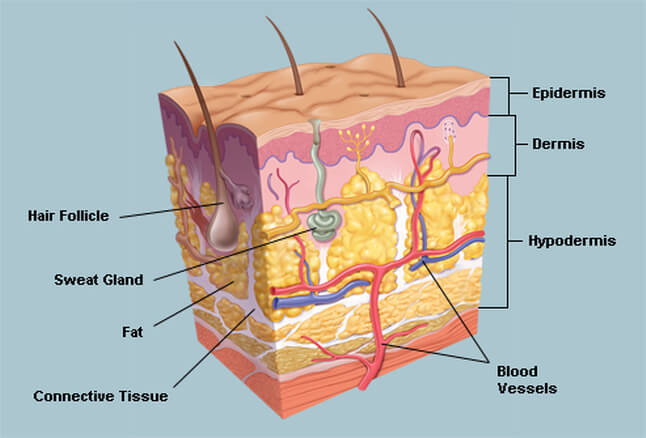Typically the biggest organ in the human body is one you can see many easily, the skin. Our skin is considered an body organ since it has some really specific functions — such as maintaining body temperature and safeguarding the other organs through bacteria — that need a few specialized tissues.
The skin of an average adult has a surface area of over 21 square feet and accounts for 6% to 10% of your body weight, edging out the liver, your body’s second-largest organ, which accounts for approximately 2.5% of your body weight.

The skin has 3 layers:
- The epidermis, the outermost layer of skin, provides a waterproof barrier and creates our skin tone.
- The dermis, beneath the epidermis, contains tough connective tissue, hair follicles, and sweat glands.
- The deeper subcutaneous tissue (hypodermis) is made of fat and connective tissue.
The skin’s color is created by special cells called melanocytes, which produce the pigment melanin. Melanocytes are located in the epidermis.
The most common skin conditions are:
- Rash: Nearly any change in the skin’s appearance can be called a rash. Most rashes are from simple skin irritation; others result from medical conditions.
- Dermatitis: A general term for inflammation of the skin. Atopic dermatitis (a type of eczema) is the most common form.
- Eczema: Skin inflammation (dermatitis) causing an itchy rash. Most often, it’s due to an overactive immune system.
Read also: This is What Happens to Eczema and Age Spots When You Put Apple Cider Vinegar on Your Face
- Psoriasis: An autoimmune condition that can cause a variety of skin rashes. Silver, scaly plaques on the skin are the most common form.
- Dandruff: A scaly condition of the scalp may be caused by seborrheic dermatitis, psoriasis, or eczema.
- Acne: The most common skin condition, acne affects over 85% of people at some time in life.
- Cellulitis: Inflammation of the dermis and subcutaneous tissues, usually due to an infection. A red, warm, often painful skin rash generally results.
- Skin abscess (boil or furuncle): A localized skin infection creates a collection of pus under the skin. Some abscesses must be opened and drained by a doctor in order to be cured.
- Rosacea: A chronic skin condition causing a red rash on the face. Rosacea may look like acne, and is poorly understood.
- Warts: A virus infects the skin and causes the skin to grow excessively, creating a wart. Warts may be treated at home with chemicals, duct tape, or freezing, or removed by a physician.
 Freshsein
Freshsein